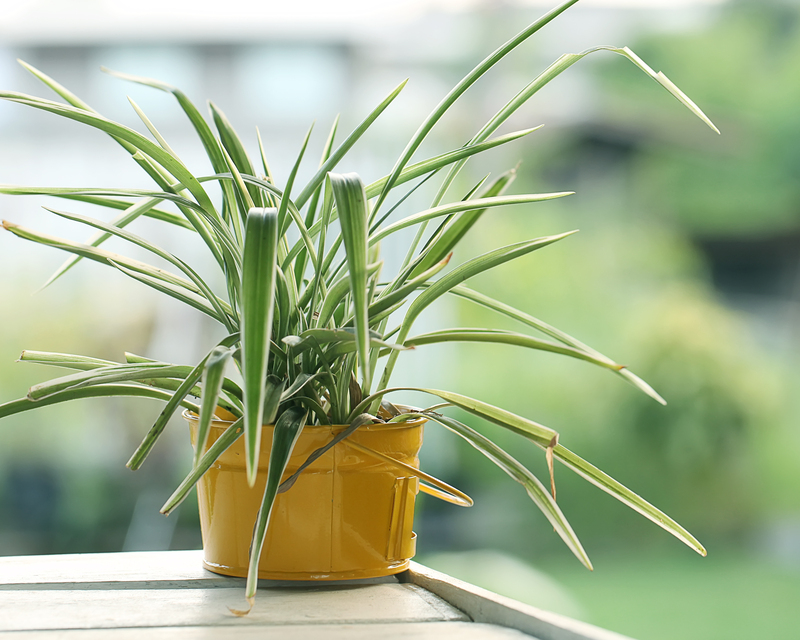Your Step-by-Step Guide to Lawn Perfection for First Timers
Embarking on the journey to a picture-perfect lawn may seem daunting, especially for first timers. However, with the right approach, tools, and knowledge, achieving a lush, green yard is absolutely within your reach. This step-by-step guide to lawn perfection is designed to help beginners lay the groundwork for a thriving, head-turning lawn--all with easy-to-follow steps, practical tips, and expert insights.
Understanding Lawn Perfection: What Does It Mean?
Lawn perfection doesn't mean identical grass blades or an absolutely flawless surface. Instead, it's about establishing a healthy, vibrant lawn that adds beauty and value to your home. A pristine yard offers a safe haven for play, relaxation, and outdoor gatherings. For first time homeowners or renters, the goal should be a lawn that's dense, free of major weeds, and consistently green throughout the growing season.
Why Focus on Lawn Perfection?
- Increases curb appeal and property value
- Prevents soil erosion and runoff
- Provides a cooler, softer landscape surrounding your home
- Enhances outdoor living spaces

Step 1: Assess Your Lawn's Current State
Before jumping into action, begin by closely examining your yard. Every great lawn care journey starts with a clear understanding of your starting point.
- Take note of bare spots, weed infestations, and existing grass health.
- Check how much sunlight your lawn receives--different grass types thrive under different lighting conditions.
- Identify areas with drainage problems or heavy foot traffic.
- Test your soil for pH and nutrient levels using a home soil test kit or by contacting your local cooperative extension.
A thorough lawn assessment ensures you choose the right strategies and tools in your pursuit of lawn perfection.
Step 2: Choose the Ideal Grass Type
Achieving your dream yard starts with the right foundation: selecting a grass variety suited for your local climate, soil, and intended use. The two primary grass categories are:
- Cool-Season Grasses: Kentucky bluegrass, perennial ryegrass, fescue - best for northern regions.
- Warm-Season Grasses: Bermuda, zoysia, St. Augustine - excellent for southern climates.
Some areas may benefit from blends or mixtures, combining multiple types for robust performance year-round. Check with your local garden center or extension office to discover grasses tailored for your area.
Factors to Consider When Choosing Grass
- Amount of direct sunlight
- Level of maintenance desired
- Foot traffic and lawn usage
- Water availability and restrictions
Tip: When it comes to lawn perfection for first timers, opting for low-maintenance, disease-resistant varieties can set you up for success!
Step 3: Prepare and Improve Your Soil
A healthy lawn grows from healthy soil. Preparing your soil is a key step in this step-by-step guide to lawn perfection.
How to Prepare Your Soil:
- Remove debris: Clear your yard of sticks, rocks, and old grass or weeds.
- Aerate compacted soil: Use a manual or powered aerator to open up the ground for water and oxygen penetration.
- Test the soil: Apply lime if too acidic or elemental sulfur if too alkaline, according to soil test results.
- Add organic matter: Work compost or aged manure into the top 2-4 inches for improved fertility and drainage.
- Level the surface: Fill in low spots and gently slope away from structures for proper drainage.
Soil preparation might seem tedious, but quality soil is the secret weapon to achieving a lush, green lawn.
Step 4: Seeding, Sodding, or Plugging--Start Your Lawn Right
There are three primary ways to establish a new lawn or repair existing lawns:
- Seeding: Spreading grass seed is cost-effective and ideal for large areas. Choose certified seed adapted to your climate.
- Sodding: Sod provides an instant green carpet and rapid results. However, it's generally more expensive than seed.
- Plugging: Small sections ("plugs") of established grass are planted at intervals--best for warm-season lawns.
Steps to Plant Grass Seed:
- Loosen the soil surface to a depth of at least 2 inches.
- Spread seed evenly using a seed spreader, ensuring good coverage but avoiding overcrowding.
- Lightly rake and press seeds into the soil for better contact.
- Mulch lightly with straw (not hay!) to conserve moisture and protect new seed.
- Keep the area consistently moist until grass is 2-3 inches tall.
Patience is crucial--seeds take time to germinate. Avoid walking on newly seeded or sodded areas until established.
Step 5: Watering--The Lifeblood of Lawn Success
Consistent, deep watering is fundamental to achieving lawn perfection, especially in the early stages of establishment.
Watering Guidelines for New Lawns:
- Keep soil evenly moist but not soggy during germination or root setting (usually 2-3 weeks for seed, 1-2 weeks for sod).
- Once grass is established, transition to deep, infrequent watering--1 to 1.5 inches per week. Early mornings are best.
- Reduce watering in rainy or cool periods to prevent disease.
Watering deeply but less often encourages roots to grow deeper, resulting in a more drought-tolerant and lush lawn.
Step 6: Mowing--Mastering the Art of Cutting Grass
Proper mowing practices are critical in your step-by-step guide to lawn perfection. Many lawn issues stem from improper mowing, including scalping, browning, and weed invasion.
Mowing Best Practices:
- Mow regularly: Never cut more than one-third of the grass blade at a time.
- Keep blades sharp: Dull blades tear grass, inviting disease and stress.
- Adjust mowing height by grass type and season (see manufacturer or lawn guide recommendations):
- Cool-season grasses: 2.5-4 inches
- Warm-season grasses: 1-2.5 inches
- Leave grass clippings on the lawn to return nutrients, unless clumping occurs.
Mowing at the right height helps your lawn stay resilient, lush, and greener for longer.
Step 7: Feeding and Fertilizing--Nourishing Your Lawn for Perfection
Regular feeding supports the deep color and growth associated with a perfect lawn. Fertilizing is essential for long-term health and vigor.
Fertilizing Tips for Beginners:
- Apply a starter fertilizer during planting or overseeding for rapid root growth.
- Feed existing lawns 2-4 times per year, timing applications for spring and fall (cool-season) or late spring and summer (warm-season).
- Use slow-release, balanced fertilizers for sustained feeding and reduced runoff.
- Always follow product instructions--overfertilizing can damage your lawn.
A thick, green lawn is often the result of a well-designed fertilization routine!
Step 8: Weed and Pest Management--Protecting Your Lawn Investment
No guide to lawn perfection for first timers would be complete without a focus on weed and pest control. Weeds can quickly overtake healthy lawns, while pests and diseases can leave unsightly patches and thinning.
Simple Strategies to Manage Weeds and Pests:
- Pre-emergent herbicides: Target weed seeds before they sprout in early spring or fall.
- Spot-treat visible weeds using selective herbicides or by hand-pulling.
- Encourage thick turf: Dense lawns naturally crowd out most weeds.
- Monitor for pests: Learn to recognize signs of common pests like grubs, chinch bugs or fungal diseases.
- Treat problems early: Use the least toxic remedy possible, such as neem oil, insecticidal soap, or approved synthetic treatments for severe cases.
Integrated pest management--combining cultural, biological, and, if necessary, chemical controls--offers effective, environmentally friendly lawn protection.
Step 9: Overseeding and Repair--Keeping Your Lawn Full and Flawless
Over time, even the best-maintained lawns develop thin or bare areas. Overseeding is the process of planting new grass seed into an existing lawn to keep your turf dense and lush.
How to Overseed:
- Mow your lawn short and collect the clippings.
- Rake or aerate the area to expose the soil.
- Spread high-quality seed that matches your lawn type.
- Water daily until sprouts are well established.
For persistent bare spots or pet damage, consider patch repair kits available at most garden centers.
Step 10: Year-Round Lawn Care: Seasonal Tasks for Perpetual Perfection
Achieving lawn perfection isn't a one-time event--it's an ongoing commitment. Year-round lawn care helps maintain your yard's health and beauty through every season.
Spring Lawn Care
- Rake winter debris and dead grass
- Aerate compacted soil and apply fertilizer
- Control early weeds with pre-emergent treatments
- Begin regular mowing as grass starts growing
Summer Lawn Care
- Mow at highest recommended height to shade roots
- Water deeply 1-2 times weekly depending on rainfall
- Monitor for heat stress and pest issues
- Avoid heavy fertilization during hot periods
Fall Lawn Care
- Overseed thin areas and apply fall fertilizer
- Continue mowing and remove fallen leaves
- Aerate compacted soil for root growth
- Apply pre-winter weed control if needed
Winter Lawn Care
- Keep foot traffic low on dormant lawns
- Remove debris and avoid salt damage from walkways
- Use dormant season to plan upgrades or landscape projects
Common Lawn Care Mistakes to Avoid for First Timers
- Overwatering or underwatering: Both can foster diseases and weaken grass roots.
- Mowing too short ("scalping"): Exposes soil to weeds and dries out the roots.
- Skipping soil tests: Without a soil test, you risk the wrong fertilizer or missing key deficiencies.
- Ignoring early signs of trouble: Address pests, weeds, or brown patches early for quick recovery.

Tools Every First-Timer Needs for Lawn Perfection
- Lawn mower (manual, gas, or electric)
- String trimmer or edger for tidy borders
- Rake for debris and thatch removal
- Garden hose with spray nozzle or lawn sprinkler
- Seed/fertilizer spreader for even applications
- Hand weeder or garden spade
- Gloves to protect your hands
Final Thoughts: Your Pathway to the Perfect Lawn
Lawn perfection for first timers is not only achievable, but incredibly rewarding. Remember, patience and consistency are your best allies. With each step--from choosing the right grass to mastering watering, mowing, and seasonal care--you're not just creating a lush, green expanse, but building a landscape that brings joy, pride, and value to your home.
Start with these simple yet powerful steps. Each day brings you closer to the envy-of-the-neighborhood, resilient, and beautiful lawn you deserve.
Have questions about your yard? Reach out to local lawn experts or gardening clubs for personalized advice. Here's to your journey toward lawn perfection--one thoughtful step at a time!



